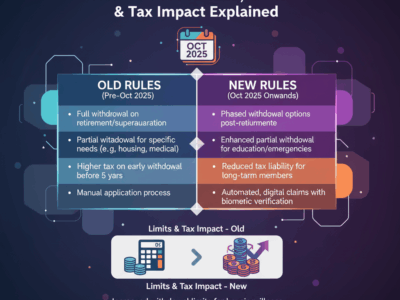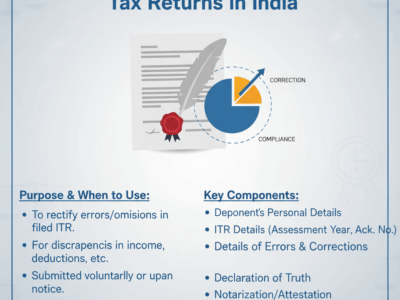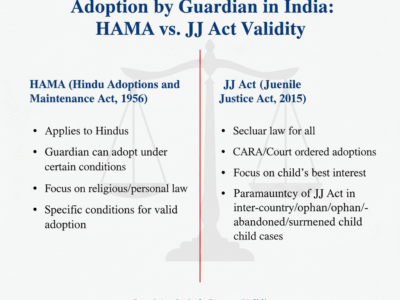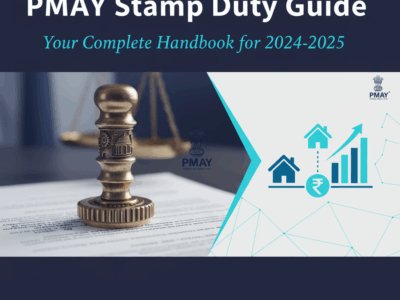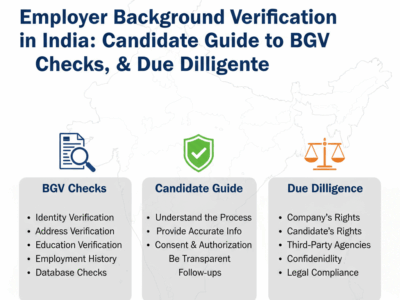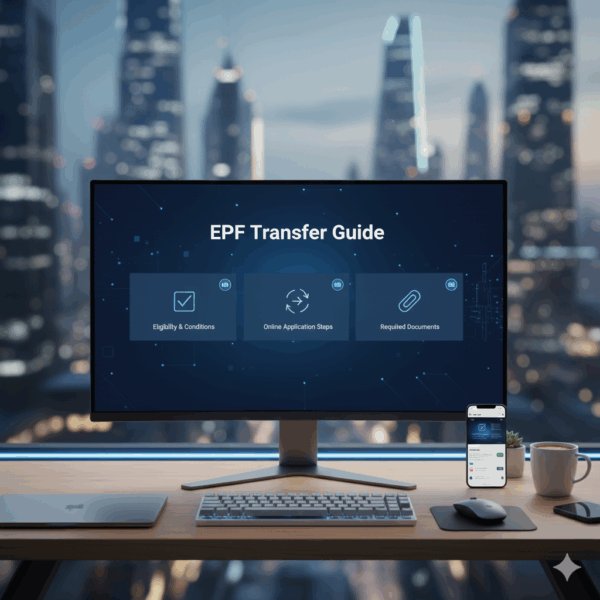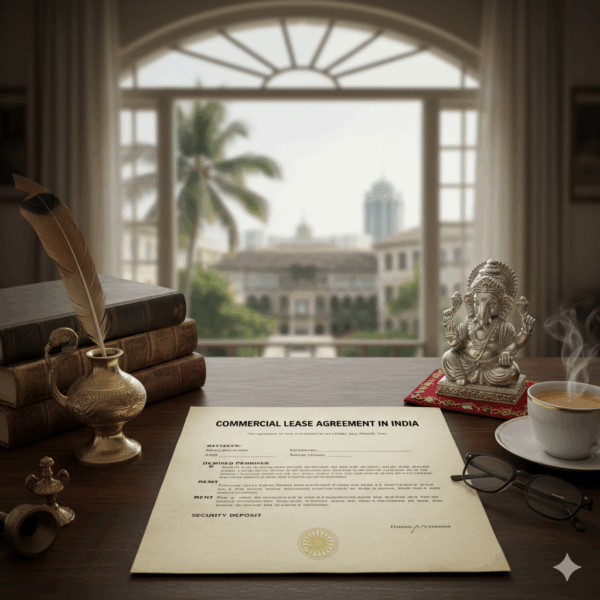Converting your existing state-registered vehicle to the new Bharat (BH) series is now a legal right, but it’s a path filled with financial risk. While MoRTH rules permit the conversion, the critical question remains: will you get a refund for the Lifetime Road Tax (LTT) you’ve already paid? This guide provides a complete legal analysis of the 2025 conversion process, from Form 27A to navigating the Vahan portal, and confronts the “sunken cost” problem that state RTOs are creating. We’ll cover your eligibility, the required documents, and the 3-step action plan you must take before applying.
Converting Your State Vehicle Registration to the Bharat (BH) Series
A Legal Analysis | Updated: October 28, 2025
The Legal Right vs. The Financial Hurdle
Converting a vehicle's registration from a standard state-based mark (e.g., "DL 1C") to the pan-India Bharat (BH) series is now a codified legal right. The Ministry of Road Transport and Highways (MoRTH) enabled this via **Notification G.S.R. 879(E) on December 14, 2022**, amending the Central Motor Vehicles Rules (CMVR), 1989.
This amendment, specifically **Rule 51B, sub-rule (4)**, allows existing vehicle owners to convert to the BH series if they meet the eligibility criteria and pay the required tax. This change makes much online information obsolete; conversion of existing vehicles is unequivocally permitted.
The Central Conflict: Law vs. Revenue
Central Government's Mandate
MoRTH rules require states to allow conversion for seamless, pan-India vehicle movement, replacing the 15-year "Lifetime Road Tax" (LTT) with a biennial (2-year) payment system.
State Government's Finances
States lose upfront LTT revenue. MoRTH rules do not, and perhaps cannot, force states to issue pro-rata refunds for the LTT already paid. This creates a risk of financial loss for the applicant.
The Legal Foundation for Conversion
Operative Rule: CMVR Rule 51B, Sub-rule (4)
The specific legal power for conversion is vested in this new rule. It states that an eligible vehicle owner can apply for a BH series mark using **Form 27A** to the registering authority where the vehicle is "currently registered or placed."
"(4) if at any time, owner of a vehicle registered in regular series... becomes eligible for BH-series... then owner of such vehicle shall apply in **Form 27A** for assignment of registration mark in BH-series to any registering authority... in which such vehicle is **currently registered or placed**."
The phrase "currently registered or placed" is noteworthy. It ensures the application is filed with the original RTO that collected the Lifetime Road Tax (LTT).
The MoRTH Advisory (March 18, 2024)
Following "refusal by State Registering Authorities," MoRTH issued a formal advisory (No. RT-110361/48/2019-MVL). This advisory directs all states to "implement sub-rule (4) of Rule 51B... in letter and spirit." If an RTO denies your application, this document is your primary tool to demonstrate their non-compliance with a Central Government directive.
Who is Eligible for Conversion?
To apply, you must currently meet the eligibility criteria defined in **Rule 47(1)(ca) and (cb)** of the CMVR. The BH series is available only for non-transport (private) vehicles.
Government & Defence Personnel
Employees of Central Government, State Governments, or Defence services.
Required Proof:
- Official Identity Card OR
- Service Certificate
PSU & Public Sector Bank Employees
Employees of Central or State-owned Public Sector Undertakings (PSUs) and Public Sector Banks.
Required Proof:
- Official Identity Card
Private Sector Employees
Employees of a private company that has offices in **four or more** different States/UTs.
Required Proof:
- Working Certificate in **Form 60**
Eligibility & Documentation Matrix
| Applicant Category | Eligibility Criteria | Mandatory Primary Document |
|---|---|---|
| Government Employee | Employee of Central/State Govt or Defence | 1. Official ID Card OR 2. Service Certificate |
| PSU / Public Sector Bank | Employee of a Central/State PSU or Bank | 1. Official Identity Card |
| Private Sector Employee | Employer has offices in 4 or more States/UTs | 1. Working Certificate in Form 60 |
The Conversion Dossier: Required Documents
Your application will be rejected if any required component is missing. You must assemble a complete dossier of all legal and supporting documents.
Your Document Checklist
-
Form 27A (The Core Application)
This is the specific, mandatory application for converting to the BH series.
-
Eligibility Proof
Form 60 (for private sector) or your Official ID/Service Certificate (for government sector).
-
Financier's NOC (If vehicle is on loan)
A No Objection Certificate from your bank is essential. The RTO will not change the registration without it, as it would invalidate the bank's lien on the vehicle.
-
Ancillary Documents
Original RC, valid PUC, valid Insurance, PAN Card, and Aadhaar Card.
The 5-Step Conversion Workflow
The conversion is executed online via the MoRTH Vahan portal (parivahan.gov.in), not through a dealer.
Initiate on Vahan Portal
Log in and select "Vehicle Related Services." You must use the service for existing vehicles (e.g., "Conversion of Vehicle"), not the dealer-facing new vehicle registration (Form 20).
File Application & Upload Dossier
Enter your existing registration number. Fill out the digital Form 27A and upload scanned copies of your complete document dossier (Form 60/Service ID, Financier's NOC, RC, etc.).
Pay BH Series Tax
The portal will calculate your new motor vehicle tax. You must pay the first biennial (2-year) installment online to proceed.
RTO Verification
Your application is digitally sent to your current RTO. Officials will verify the authenticity of your documents, especially the eligibility proof (Form 60).
Assignment of New BH Mark
Once approved, the Vahan portal randomly generates your new BH series number. You will receive a new RC and must get new High-Security Registration Plates (HSRP) affixed.
Financial Analysis & Tax Conflicts
This is the most complex part of the conversion. You must understand the new tax structure and the high risk of forfeiting your previously paid Lifetime Road Tax (LTT).
New BH Series Tax Slabs
| Vehicle Invoice Price (Ex-GST) | Base Tax Rate |
|---|---|
| Below ₹10 Lakhs | 8% |
| ₹10 Lakhs - ₹20 Lakhs | 10% |
| Above ₹20 Lakhs | 12% |
|
Diesel Vehicles: Add 2% to base rate
Electric Vehicles: Subtract 2% from base rate |
|
Interactive Chart: 15-Year Tax Cost Comparison
The BH series tax is paid every 2 years and is 1.25x the base rate. A typical state LTT is a large one-time payment. Use the slider to see how the total 15-year cost compares for a petrol vehicle.
Note: Assumes a state LTT of 10% for calculation. Actual state LTT will vary.
The "Sunken Cost" Problem: Pre-Paid LTT
This is the main financial risk. The conversion requires you to start paying the new BH series tax. The Central Government's rules do not force your state to refund the remaining balance of the 15-year LTT you have already paid.
Case Study: West Bengal's "No Refund" Policy
A notification from the West Bengal Transport Department provides a clear example. It complies with the Centre by allowing conversion but then uses its own State Tax Act to block financial refunds.
"However, refunds for the residual tax amount will not be allowed under the provisions of the West Bengal Motor Vehicles Tax Act, 1979."
This means an applicant in that state might have their first BH tax payment waived ("adjusted") but would likely forfeit the entire remaining balance (e.g., 10-14 years' worth) of their LTT.
Post-Conversion: Your Immediate Obligations
Once your new BH series number is approved and assigned, your work is not finished. You must complete two critical steps to ensure your vehicle is legally compliant.
1. Affix New HSRP
Your old state-based High-Security Registration Plates (HSRP) are now invalid. You must apply for and affix a new set of HSRP corresponding to your new BH series number. This is typically done through a government-authorized portal (like bookmyhsrp.com or a state-specific vendor). Driving without the correct HSRP is a punishable offense.
2. Update Your Insurance Policy
Your motor insurance policy is tied to your old registration number. In the event of an accident, an insurer could deny your claim based on this mismatch. You must contact your insurance provider immediately, submit your new Registration Certificate (RC), and request an "endorsement" on your policy to reflect the new BH series number.
The Biennial Tax Regimen & Penalties
The BH series operates on a "pay-as-you-go" model. After your initial 2-year tax payment, you must continue to pay the tax every two years to maintain your vehicle's registration.
How to Pay Your Biennial Tax
The process is managed entirely through the Vahan portal. You will receive an alert or notification as your 2-year period approaches its end. You must log in, verify your details, and pay the calculated tax for the next 2-year block. The tax amount remains consistent (based on your vehicle's invoice price and category) for the first 14 years.
Consequences of Non-Payment
Failure to pay the biennial tax is a serious compliance failure. Under **Rule 51B, sub-rule (2)**, if the tax is not paid, the vehicle "shall cease to be a vehicle registered in BH-series" and will be "liable for penalty." This means your registration is effectively cancelled, and you cannot legally drive the vehicle until all arrears and penalties are cleared.
Life Events: Resale & Change in Eligibility
The flexibility of the BH series also extends to changes in your personal or professional life, such as selling the car or leaving your job.
Case 1: Resale of a BH Series Vehicle
You can sell your BH series vehicle to any person. The rules for transfer of ownership are as follows:
- To an Eligible Person: If the new buyer is also eligible for the BH series (e.g., they are a government employee or work for a qualifying private company), the registration can be transferred to their name, and they will continue the biennial tax payment regimen.
- To a Non-Eligible Person: If the new buyer is not eligible for the BH series (e.g., they are self-employed or their company does not qualify), the vehicle must be re-registered. The new owner must apply for a regular state registration number in their state of residence and pay the full pro-rata Lifetime Road Tax (LTT) as applicable under that state's laws.
Case 2: You No Longer Meet Eligibility
If your circumstances change (e.g., you retire, or you leave your qualifying job for one that doesn't meet the criteria), you are no longer eligible to continue the BH series registration. In this scenario, you must convert the vehicle to a regular state registration mark for the state where you are placing the vehicle. This will involve paying the balance of the Lifetime Road Tax (LTT) for the remaining duration of the 15-year period.
Frequently Asked Questions
My RTO denied my conversion application. What can I do?
This is a common issue. You should formally present the **MoRTH Advisory dated March 18, 2024 (No. RT-110361/48/2019-MVL)** to the registering authority. This advisory explicitly instructs all states to implement the conversion rule. If they still refuse, you may need to escalate the matter to a senior official (e.g., the Transport Commissioner) or file a grievance on the CPGRAMS portal.
Is the BH series tax cheaper in the long run?
Not necessarily. The total tax paid over 15 years for a BH series vehicle is 1.25 times the base tax. This is often *more* expensive than a one-time state LTT. The primary benefit of the BH series is not cost savings, but the flexibility of not having to re-register your vehicle every time you move to a new state, and spreading the tax payment over many years instead of one large upfront cost.
Can I get a BH series for my existing two-wheeler?
Yes. The rules for the BH series apply to all non-transport vehicles, which includes both private cars and motorcycles. If you and your vehicle meet all the eligibility criteria, you can apply for conversion.
Your 3-Step Action Plan Before Converting
The conversion is legally possible but financially risky. Before you log in to the Vahan portal, you must complete this pre-application checklist.
Contact Your Financier (If Loan is Active)
Your first call. You must secure a written **"NOC for Registration Mark Conversion."** Without the bank's permission, the application is a non-starter.
Contact Your HR (If Private Sector)
Your second call. Confirm that your company's authorized signatory will issue the **Working Certificate in Form 60**, certifying your employment and the company's presence in 4+ states.
Investigate Your State's Tax Act
The most important step. Do not assume you will get a refund. Search for your state's specific transport department notifications on LTT refunds for BH conversion. Be prepared for the possibility of forfeiting your remaining LTT balance, as seen in the West Bengal example.

